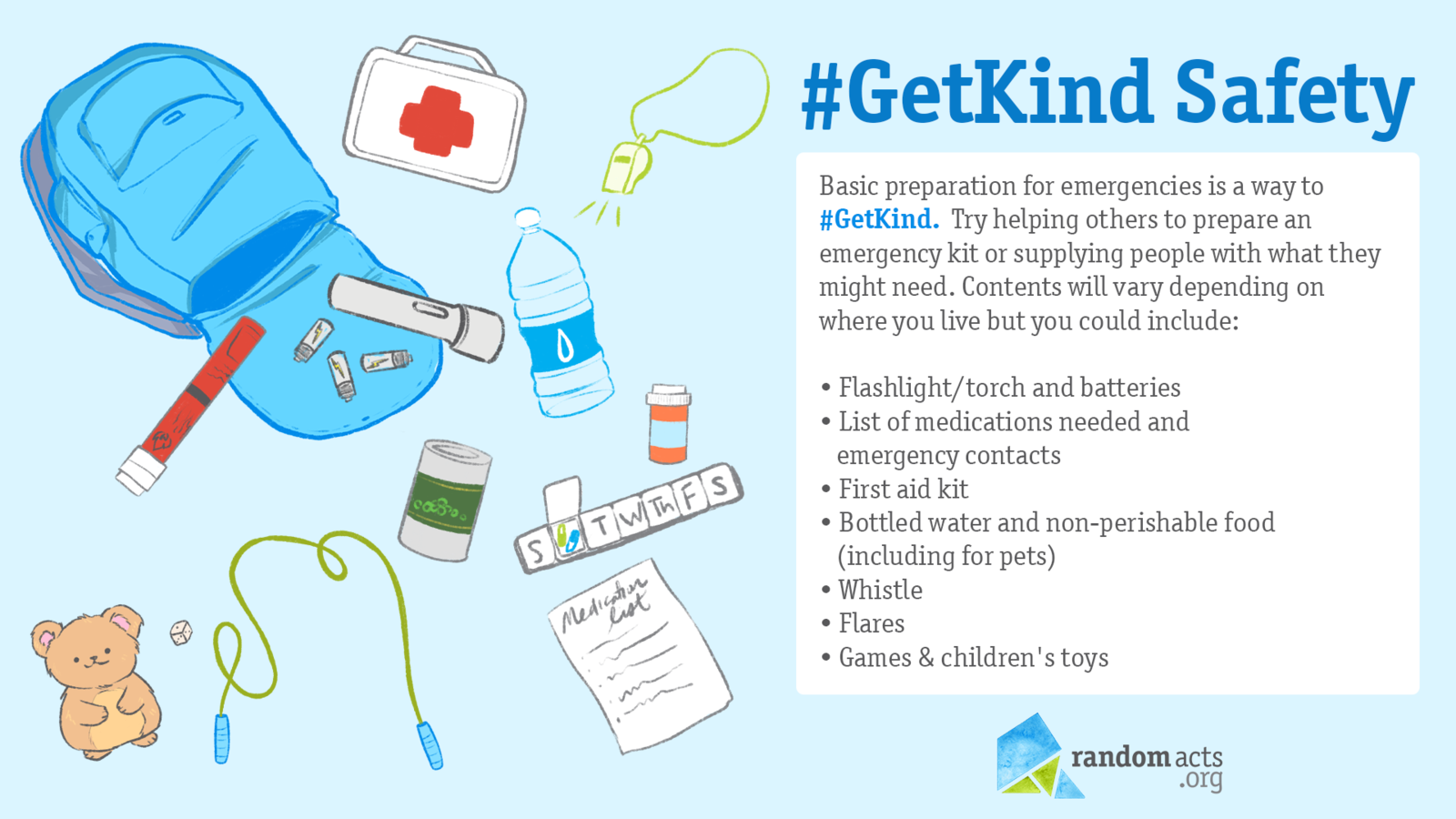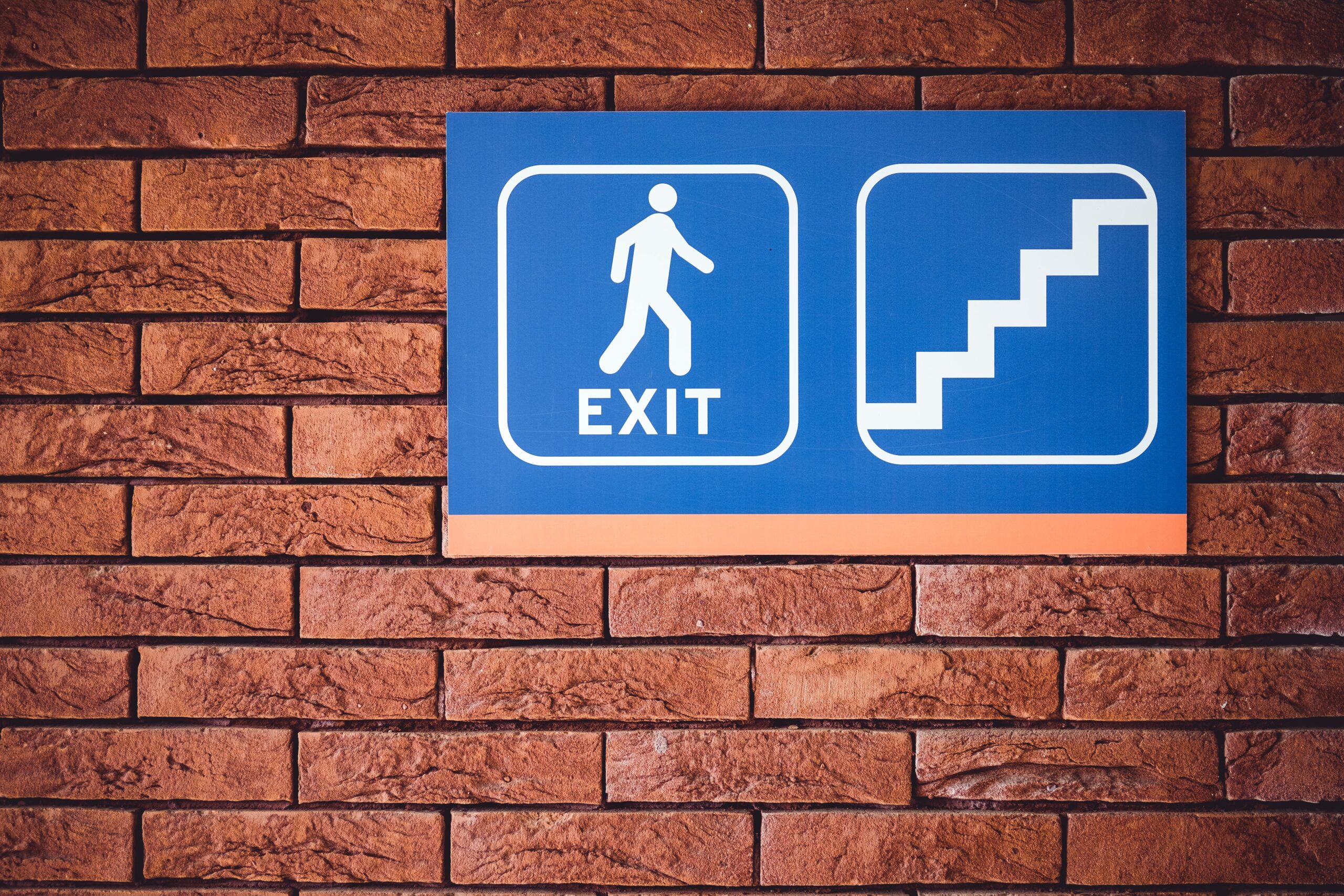For May and June’s #GetKind theme, Random Acts staff members wanted to share their disaster preparedness strategies. If you are familiar with Random Acts, then you may already know that every two months are dedicated to a unique #GetKind theme. These themes are meant to inspire our staff members, volunteers, and supporters to #GetKind in their day-to-day lives.
With that in mind, our May and June safety theme is taking a moment to discuss disasters and what it really means to be prepared.
Understanding Natural Disasters for #GetKind Safety
It is common knowledge that disasters strike unexpectedly or with minimal warning and damage nature, mankind, animals, or objects. In fact, a disaster is only considered as such if someone is there to record or research it. For example, a disaster could be:
- Earthquakes
- Hurricanes
- Floods
- Extreme Heat or Cold
- Severe Thunderstorms and Lightning
- Tsunamis
- Wildfires
- Wild Animal Attacks
Generally, a disaster is defined as a sudden event that causes major damage or loss of life. It is best to know what you are up against. In fact, scientific research indicates that being prepared increases your chances of remaining safe throughout a disaster.
 Additionally, it is not safe enough to plan for existing crises, but necessary to plan according to climate change’s increasing impact on the severity of disasters. The type of event experienced per region will remain the same, but with much greater consequences for communities.
Additionally, it is not safe enough to plan for existing crises, but necessary to plan according to climate change’s increasing impact on the severity of disasters. The type of event experienced per region will remain the same, but with much greater consequences for communities.
“In the northeast of the United States, we commonly face hurricanes and flooding,” said Kayla Schneider, Regional Representative – US Northeast. “It’s important to make sure you have working flashlights, emergency services call numbers, a charged cell phone, and non-perishable foods.”
For another example, earthquakes are more likely to occur in southern Eurasia, Iceland, portions of northern Africa, and along the rim of the Pacific Ocean. Recently, there has even been a rise in earthquakes across Italy, Greece, Croatia, Turkey, and other nearby countries. Comparatively, flooding occurrences vary depending on whether you are looking at river flooding or urban flooding.
“Australia commonly faces threats from bushfires, flooding, cyclones, and drought,” said Rebecca Guthrie, Regional Representative – Australia East. “One example of disaster preparedness, for me, is being ready for a bushfire. That means having a fire plan that covers your movements — evacuation, readiness, pets, and elderly or local relatives. It’s also important to regularly clean gutters and create a fire break around your property.”
Hope for the Best, Prepare for the Worst
As a reminder, the disasters discussed so far are not an exhaustive list. Instead, these items represent a sampling of what disasters can look like for different people and different locations.
Given these points, it is worth mentioning that disaster preparedness is a serious undertaking. Planning ahead for an emergency is a way for individuals, families, roommates, or anyone else to show love for themselves and each other.
Overall, disaster preparedness is teaching yourself about the important skills and urgent necessities needed to survive. This plan needs to last until you either receive professional disaster support or can return home safely.
either receive professional disaster support or can return home safely.
“When you’re preparing for a disaster, you should get a kit for your home. This should include at least canned foods, bottled waters, a first aid kit, and any necessary medication,” said Jus Chowdhary, Regional Representative, US – Southwest. “You can make your own or order one online. Additionally, you should make a plan with your family & neighbors. You could even organize community events where everyone can get together and share steps to take when disaster hits.”
If you experience a disaster while unhoused, it is important to seek shelter. For instance, a local community organization may offer shelter. Additionally, international organizations like the Red Cross, Red Crescent, or the United Nations may also provide disaster relief shelters.
Our Random Acts staff members are honored to share their experiences with and preparedness strategies for disasters. To that end, it is important for every individual to have a disaster preparedness strategy. Use this blog as inspiration for your own strategies, but not steadfast recommendations.
After that, you are ready to hope for the best while knowing that you have prepared for the worst.
Our Random Acts staff members have shared their disaster preparedness strategies with hopes of inspiring you to participate in #GetKind Safety. We encourage you to share your disaster preparedness with us on social media. We are proud to serve communities across the globe by performing a wide range of kindness acts, including supporting natural disaster relief.
As a nonprofit, we rely on aid from our incredible supporters — people just like you. If you want to be more involved, check out ways to get involved or consider making a donation.
